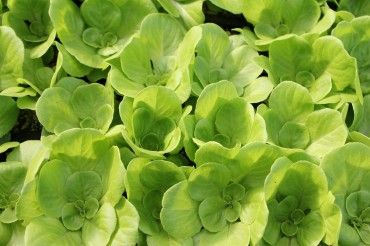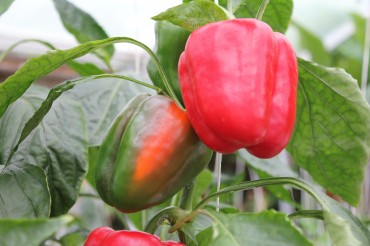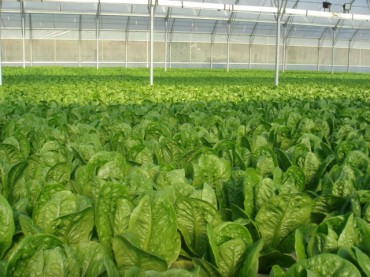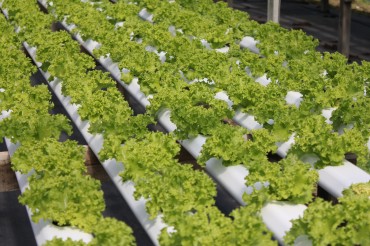Why Use Hydroponics?
Hydroponic growing is the best way to overcome global food and water shortages and produce the highest quality, nutritious produce in any type of climate.
It is a precise scientific growing method developed from experiment, experience and observation.
The hydroponic growing method provides for reliable, predictable and repeatable, safe food production.
When consumers are asked what they want from the fresh produce they purchase from the supermarket their three main preferences are as follows:
- The food must be nutritious.
- It should be free of harmful agrichemicals.
- It should be produced in a way which avoids any negative effects on the environment.
Hydroponic growing can address all three of these concerns and produce food on a scale and quality which is unmatched by any other growing method.
There are an enormous range of benefits which are possible from growing a crop hydroponically rather than in a soil based media:
- Water usage is much lower than soil based growing methods.
- Hydroponic waste water (run off), which contains valuable water & nutrients is able to be collected, filtered, treated and recycled.
- Hydroponic crop yields and crop rotations are usually much higher than crops grown in fertile soil in the same environment. This is financially significant.
- Plants are provided with all the nutrients they require in exact quantities and nutritional recipes can be fine tuned based on observations of the crop or laboratory testing.
- Any nutrient deficiencies can easily be detected and corrected with a high degree of control and responsiveness.
- Exact nutrition provides for a better cell structure in the plant resulting in a longer shelf life after harvest.
- A high degree of uniformity is obtainable with hydroponic growing – all the plants look virtually identical.
- Fertiliser usage is usually much lower than with soil growing.
- The use of an enclosed greenhouse environment enables Integrated Pest Management (IPM) strategies to be applied. IPM involves the deliberate introduction of natural insect predators into the greenhouse to prey on common pests such as aphids and whitefly. The use of IPM strategies is a modern, environmentally friendly alternative to using agrichemicals and it will form an integral part of greenhouse systems in the future.
- When a plant is grown in a soil based media the plant spends energy & time developing extensive root systems to access nutrients in the soil. In a hydroponic system the full nutrition is immediately available to the plant so it focusses more of its energy on abundant vegetative, flower or fruit growth.
- Modern greenhouse technology and hydroponic growing techniques allows cropping to be extended into higher priced periods.
- The level of control and predictability experienced with hydroponic growing allows future harvests to be planned and achieved with a high level of accuracy. With soil growing, storms or inclement weather can interrupt or terminate a crop or harvesting schedule.
- Under hot conditions the better water availability to roots can reduce water stress on plants. This provides for less stress related diseases, higher yields and longer plant life.
- For crops vulnerable to soil diseases, crippling losses can be substantially reduced or eliminated. Crops are grown above ground in a clean, soil-less hydroponic environment with good air movement from beneath.
- Hydroponic crops such as lettuces, herbs and strawberries are grown above ground level at an ideal working height for planting, cultivation and harvesting. This provides for better working conditions, faster crop turnover and lower labour costs or work related injuries.
- Hydroponic systems can be installed on cheap infertile land or waste land as well as inside buildings or on top of buildings. Because of the isolation of the system from any soil or ground water the risk of crop contamination from heavy metals or toxins in the soil is eliminated. Expensive soil remediation is not required when using a hydroponic system and wasteland that would otherwise sit dormant can now be utilised beneficially for food production.
- All growing media, nutrients and equipment are able to be assured as sterile before use. Incoming water is able to be filtered, treated and laboratory tested. All inputs are carefully monitored to ensure the growing environment and crop is clean and food safe.
- After each crop, the preparation and setting up of the next crop is very quick and simple.
- Weeds are substantially reduced or eliminated when using a hydroponic system.
- A wide variety of airborne pests can be shielded from the growing area through the use of horticultural mesh, textiles and modern greenhouse technology.
- An ever changing global climate is no obstacle to successful growing. Hydroponic crops are almost always grown under cover in a greenhouse or glasshouse, which enables an ideal climate to be promoted. The greenhouse environment can be heated, cooled, humidified or dehumidified using energy efficient technology. The crop cover eliminates rain and wind damage and the crop remains dry so that associated fungal problems from wet foliage is avoided.
- Hydroponic growing methods combined with a good greenhouse growing environment will significantly reduce plant stress and provide for a very healthy crop. This significantly reduces the need to use agrichemicals or organic sprays.
Hydroponic Growing: There really is no better way to address our global food and water shortages.





